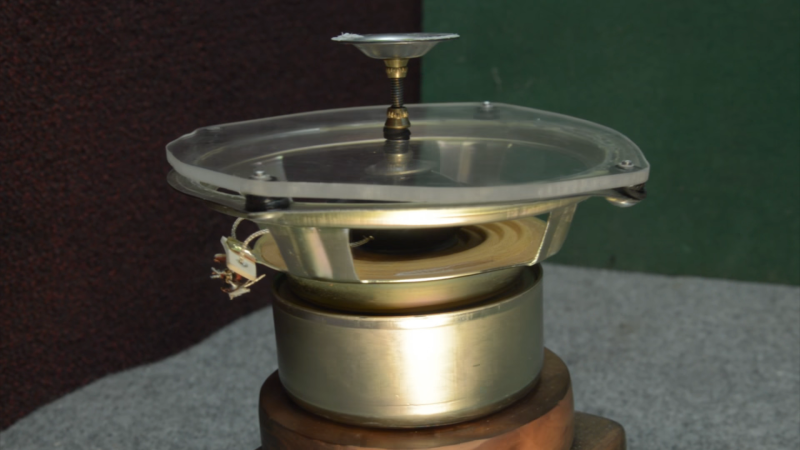Speaker cone materials can be a deep rabbit hole ranging from inexpensive paper to kevlar. We’ve all cut apart, or blown out, the cheapies to see their inner workings, but the exotic material list does not stop at audiophile-quality models. It can include mirrors, microwave ovens, and a European hacker’s forehead. Video also after the break. In addition to the speakers with expensive elements, there are sound-generating transducers with no cones. These are sometimes called surface speakers, and they vibrate something, anything, to make a sound. At their cores, they have many of the same parts, and making a surface speaker from a traditional speaker is not difficult.
The first step is to find a raw speaker, one with no crossover components, possibly from a garage sale or from a set your spouse insists are outdated, ugly, and better off as firewood. Power specifications should not change since we will be using the same solenoid, and that means your amplifier can follow the speakers back from the dead. The video provides step-by-step instructions, and the goal is to create a module with a moving shaft, but the range must be limited so it cannot be pushed back into the speaker or pulled away, both could destroy it. Once you have that, go around and make everything noisy. Don’t use this on pets or children, but spouses are fair game.
We would love to see a chip bender experiment with different speaker mediums to add an extra layer of complexity, but for the rest of us, bone conduction is already a real thing, and if you enjoy impractical speakers, you are not the only one with your head in the clouds.
















Did he build his own microphone as well? Jeebus, I couldn’t last even a minute with that audio.
haha yeah that sync was rough, no mic though, just a conversion of a normal speaker into a surface transducer.
I would much rather listen to that than any “open source” background music I’ve ever heard.
I did this sort of thing a lot when I was a kid, usually while watching the waveforms on my old Heathkit scope. You can indeed make almost any surface into a speaker, but good luck making one operate efficiently or actually sound good.
I remember seeing an ad for surface speakers on TV decades ago. In the middle you see an elderly woman showing and exclaiming “I put one in my china cabinet and now I have beautiful music all over the house”, elevator muzak jingles and tinkles included. Maybe play China Doll?
The first case of solid transmitted sound was a piano on the second floor and a rod extending thru two floors to another piano below.
I did this sort of thing a lot when I was a kid, usually while watching the waveforms on my old Heathkit scope. You can indeed make almost any surface into a speaker, but good luck making one operate efficiently or actually sound good.
I hope this idea really is his and not take from another Youtuber. In the past this person has taken ideas from other and verbatim copied them.
Tech Ingredients has a fairly comprehensive, quality video series on this with incredibly good result for the cost.
https://www.youtube.com/watch?v=zdkyGDqU7xA (first episode)